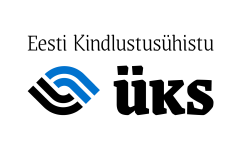 The rapid and broad-based strengthening of the world economy that occurred in 2017 has exceeded expectations. High employment rates and increasing wealth sparks optimism in people, which is apparent in the increased spending of households. Improved demand has increased the production capabilities of companies to high levels, making them take steps towards expanding their operations, i.e. making investments. For countries producing oil, the stabilisation of oil prices at higher levels than before has been highly beneficial. Even though the economic cycle is reaching a more mature phase, causing pessimists to expect another economic recession, there are still plenty of underused resources in world economy, at the expense of which certain growth can continue during the forecast period. With the help of the abovementioned advantageous conditions, the growth of world economy will be around 4% both this year and the next, according to the forecast of SEB.
The rapid and broad-based strengthening of the world economy that occurred in 2017 has exceeded expectations. High employment rates and increasing wealth sparks optimism in people, which is apparent in the increased spending of households. Improved demand has increased the production capabilities of companies to high levels, making them take steps towards expanding their operations, i.e. making investments. For countries producing oil, the stabilisation of oil prices at higher levels than before has been highly beneficial. Even though the economic cycle is reaching a more mature phase, causing pessimists to expect another economic recession, there are still plenty of underused resources in world economy, at the expense of which certain growth can continue during the forecast period. With the help of the abovementioned advantageous conditions, the growth of world economy will be around 4% both this year and the next, according to the forecast of SEB.
After a period of several years where monetary policy was very lenient, faster economic growth finally gives central banks a reason to change course. Low inflation still provides food for thought, but the increase in wages seems to be speeding up. Of course, it is easier to make decisions to increase interests in the United States, where, according to the estimation of SEB, the Federal Reserve will increase the main interest rate four times this year. In the euro area, similar steps will be much more modest, but interests will be increased in 2019. However, the scenario where people who have taken a home loan will have to worry about a high Euribor seems to be in the distant future, which we may not even reach.
In the United States, many economic indicators are nearing their historical peaks. Due to tax cuts, economic growth will speed up even further. Provided that US politics do not provide some very dramatic surprises, the GDP of the country will increase by 2.8% this year and by 2.5% in 2019. In 2017, economic growth also sped up significantly on emerging markets. While the growth of other large emerging markets will continue to increase in the future, then in China, it will slow down slightly during the forecast period, as the leaders of the country are willing to accept slower economic growth in the name of decreasing their debt burden. Russian economy has found a more secure footing due to the increased oil prices, but without reforms, their growth will not exceed about 2% in the coming years.
The faster growth of the countries in the euro area is encouraged by the concurrence of several beneficial factors. The harsher political winds in Europe have slowed down by now and the strengthening labour markets have increased the feeling of security of households to a high level. Through this, the euro area will achieve the highest growth rate in the past decade, expecting a 2.5% economic growth in 2018 and a 2.2% growth in 2019 . Real estate is important in the economic news of the Nordic countries, but it seems that the price reduction has stopped in Norway and is limited to 10% in Sweden. However, the decreased optimism may limit the construction of dwellings, which was very active so far, and thereby negatively affect several Estonian exporters. At the same time, Estonia has much to gain from the rapid economic growth in Finland, which will maintain the pace during the whole forecast period.
The Estonian economy went through the biggest growth in recent years thanks to a large construction volume. According to the forecast, economic growth will remain fast also in the next few years, but will not reach the same numbers again. According to SEB’s forecast, Estonian GDP will increase by 3.5% this year and by 3.0% in 2019. However, the economic growth will be more balanced than before – it will be supported by increases in exports, domestic investments, and consumption of households. The continued growth of Estonian employment rate will be limited, which will, at the same time, provide an opportunity to improve insufficient productivity. In the long term, however, it is becoming increasingly important to ask ourselves whether we can invest our scarce materials in the most beneficial ways so that Estonian economy would also be competitive in 10 years.
















